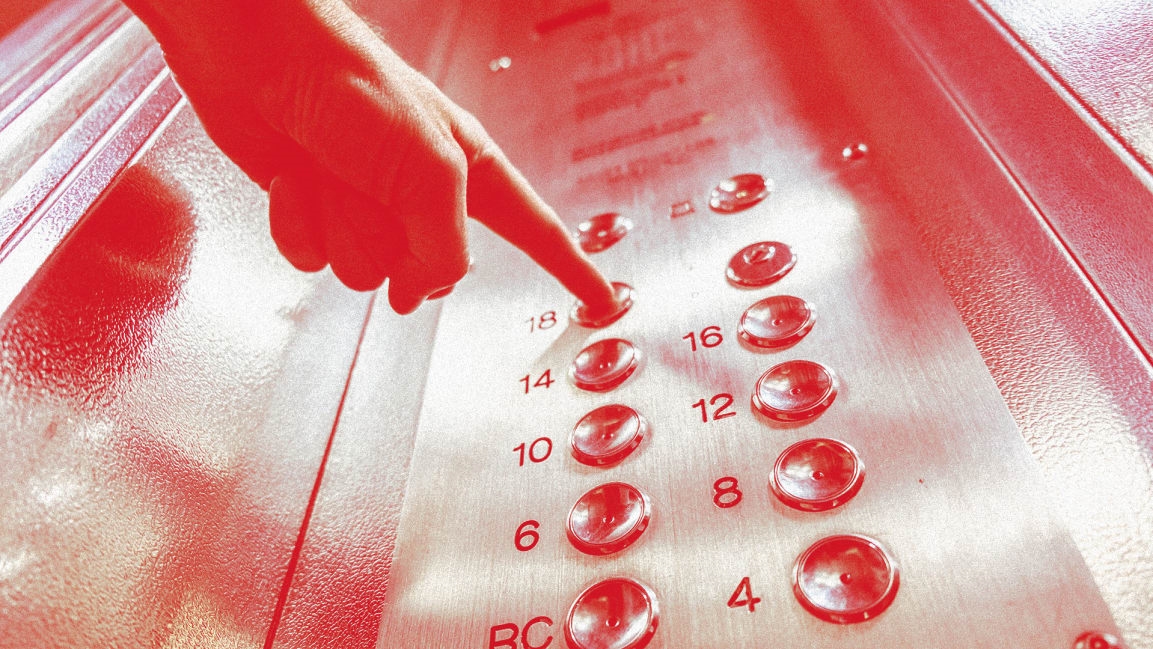How to give an elevator story that people actually listen to
You could be anywhere when you bump into someone who is important to your career. It might be your boss’s boss, your CEO, or your key customer. How do you take advantage of this interaction? After all, you probably don’t have very long to seize the opportunity–maybe 45 seconds at most.
It’s all too easy to go into panic mode. But when you prepare ahead of time, you can turn that chance encounter into a meaningful connection. Here are the steps you should take to be ready with your elevator story, whether you’re in an actual elevator, standing in line at a coffee shop, or walking to your car at a parking lot.
Step 1: Prepare ahead of time
It’s highly likely that when you do have that chance encounter, you’ll find yourself tongue-tied. You can mitigate this by preparing ahead of time. You need to have three or four elevator stories in your back pocket so that you have something you can talk about anytime and anywhere and aren’t forced to think up something on the spot.
Step 2: Think of a story as a conversation—not an event
There’s a difference between telling stories as part of an event and in a conversation. For an event, you need time. You have to set the stage, you have to describe the characters, and you have to build the tension. You usually need minutes, not seconds, and you probably want to think about using props to make your presentation more powerful.
But when you shift your mindset into seeing it as a conversation,
you’ll be able to deliver your elevator story in seconds—not minutes, before the elevator doors open. What’s great about choosing a conversation is that you never have to worry that the person you’re talking to has heard it before, because every conversation is unique.
Step 3: Choose a conversation with someone your audience cares about
Your CEO may want to hear about a conversation with a critical customer. Your head of design may want to hear about your chat with a creative thinker. Your HR director may want to hear about your discussion with a speaker at a compensation conference. By choosing a conversation with someone relevant to your audience, you’ll position yourself as someone who knows how to network with prominent figures. You’ll get a status bump.
If I share a conversation I had over lunch with the new CEO of a major retailer, I am literally at the leadership table. As you probably already know, executives care more than just what you know. They care about who you know.
Step 4: Choose an interesting quote
To really get power out of your elevator story, you need a punchline or memorable statement that sticks in their mind. When I asked the retail CEO what had changed for him since he became a CEO, he told me, “Before, when I visited one of our stores, it wasn’t a big deal—now it’s a really big deal.” It’s a simple but honest answer, and it summarizes how he felt in a concise but compelling way.
Step 5: Deliver the quote as a dialogue
Of course, it’s not just about telling a great story. To get the other person’s attention, you need to make sure that you nail your delivery. If you tell the story as the narrator, you’ll end up giving a summary, and your delivery will be flat. Here’s an example of a narration: “I was recently at a champagne brunch in Amsterdam, and I asked the waitress if she could help me open a bottle of wine. She told me to do it myself.” Contrast this with the following: “When I asked a waitress at an elaborate champagne brunch in Amsterdam to open a champagne bottle, she said, “What? Can’t you do it yourself?”
By inserting the quote in dialogue form, I get to play the “character” and add “attitude” to the delivery. This makes my delivery much more dynamic, and it makes the other person more likely to engage in a conversation.
Step 6: Remember to keep it short
A good elevator story is only 30-45 seconds. In today’s high-speed elevator environment, you have seconds–not minutes–to make your impressions.
So next time you happen to run into someone of significance, make sure you follow these steps. Before you know it, you might just turn a chance encounter into a memorable connection that can help you advance your career.
(85)



